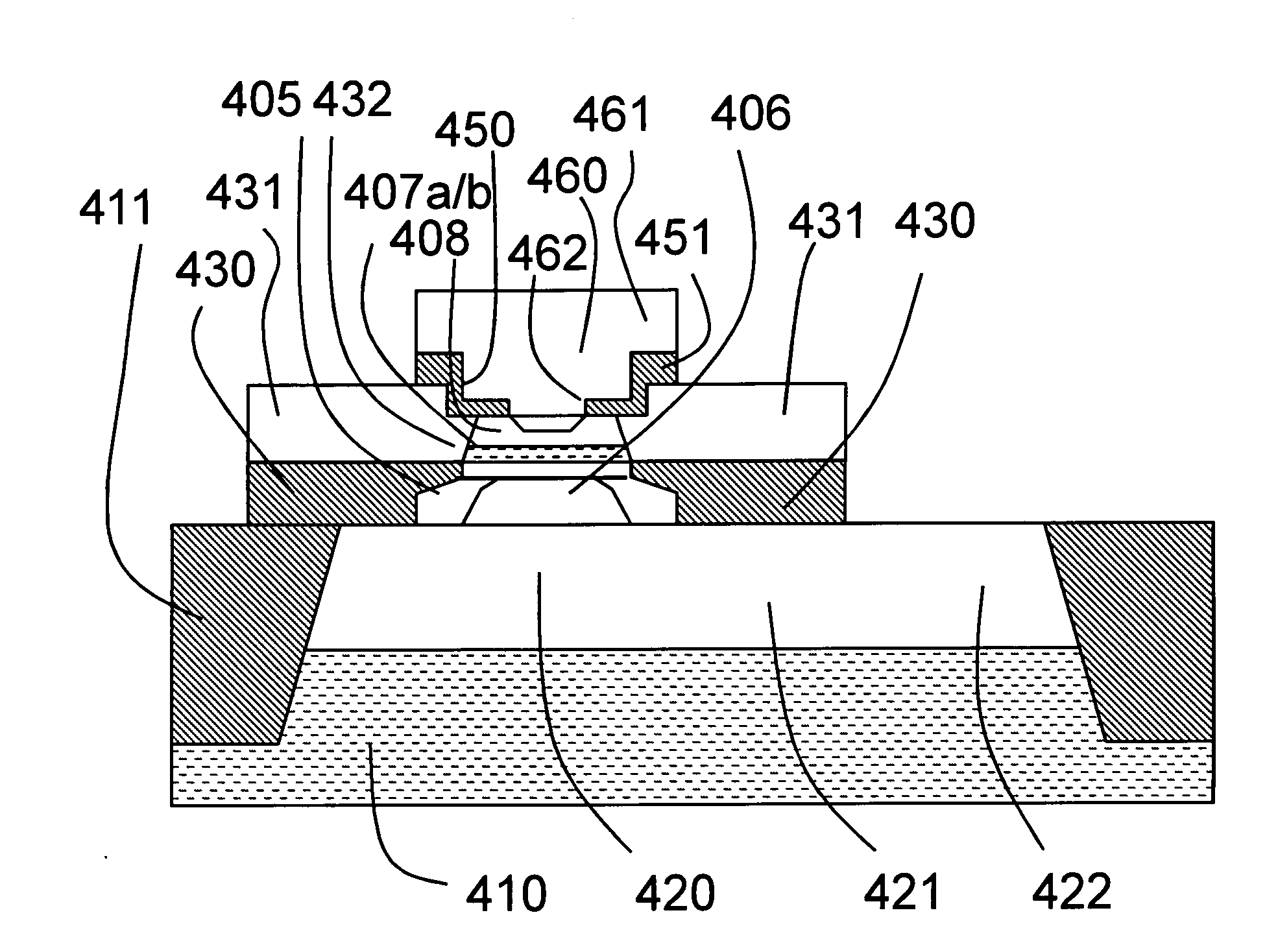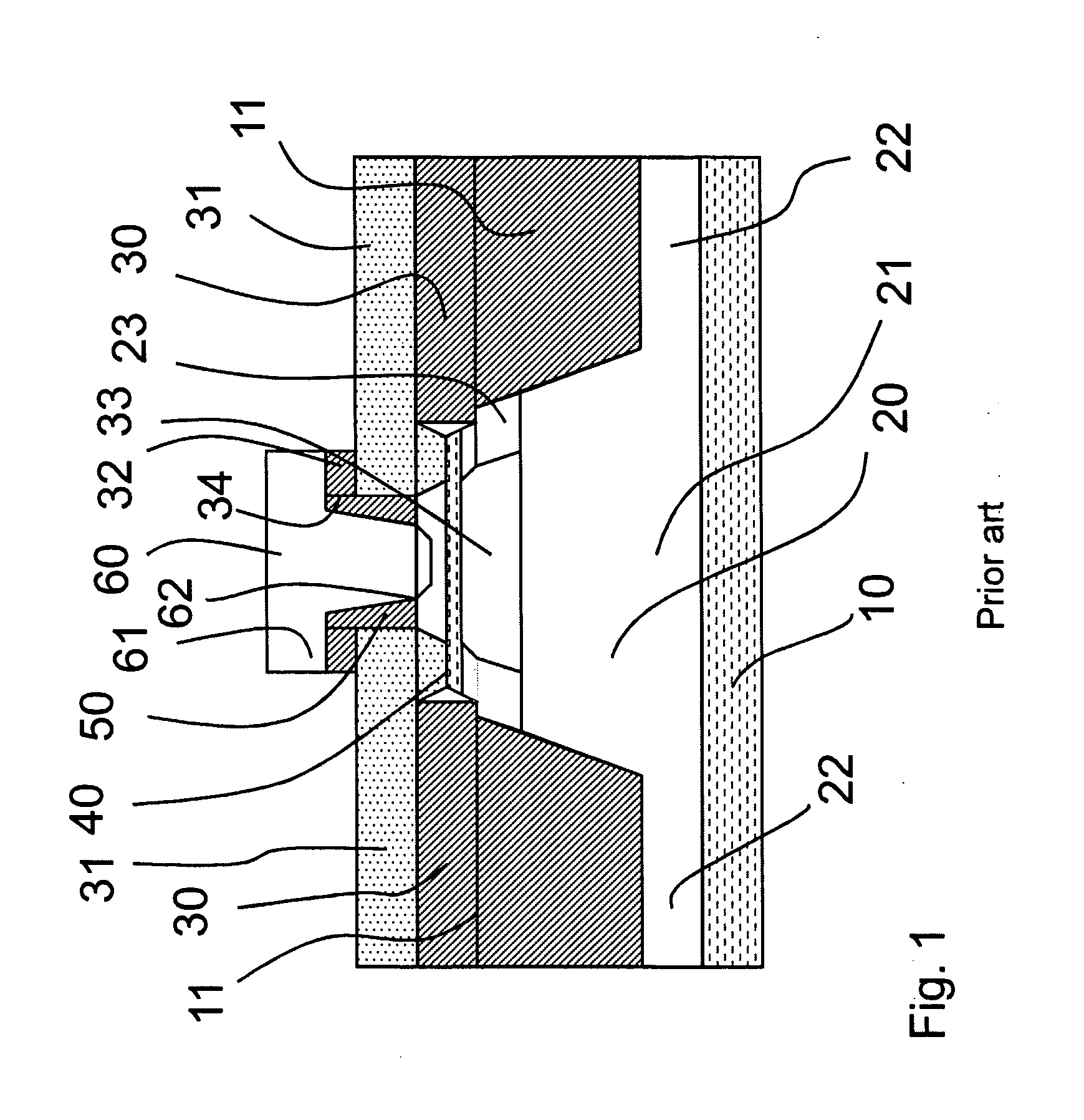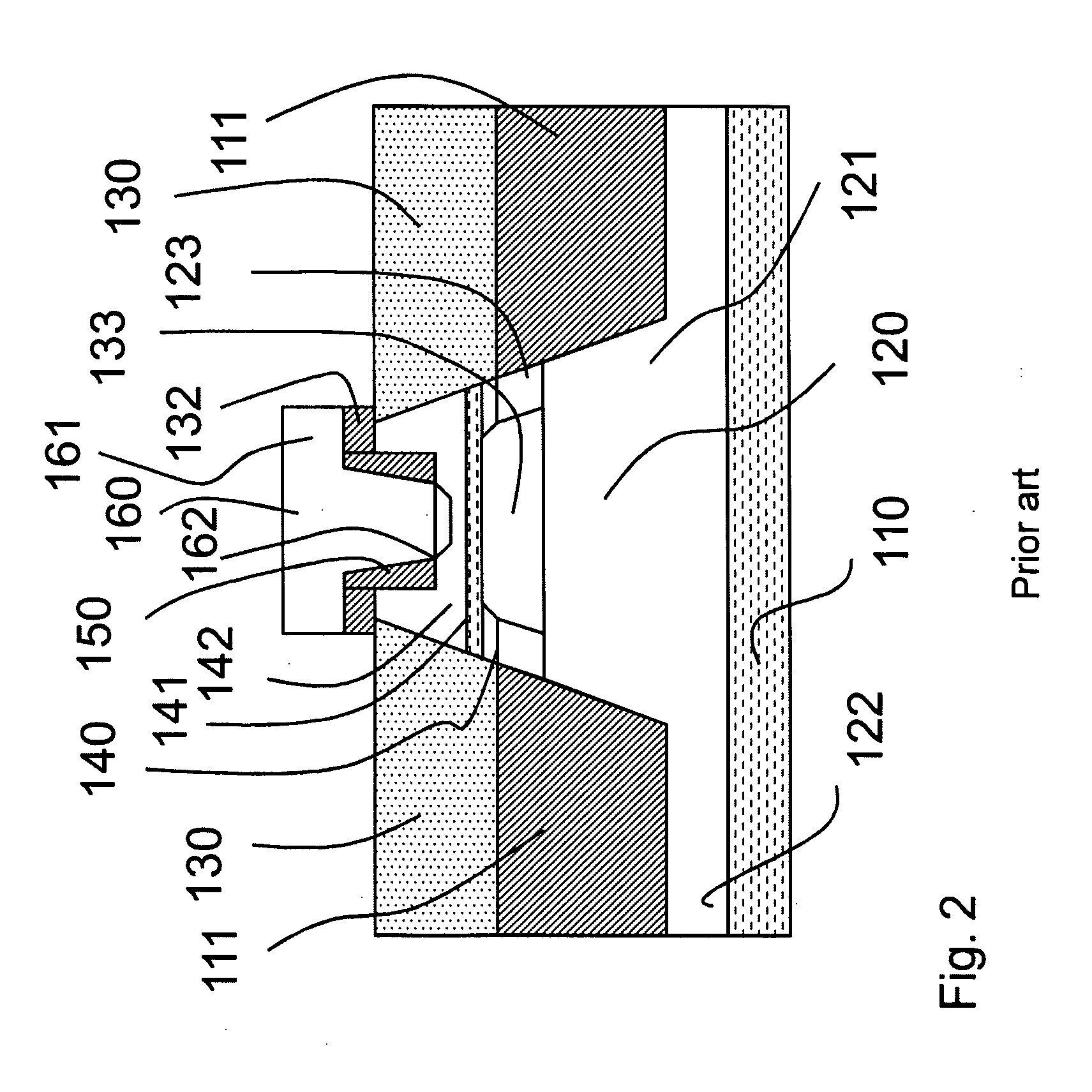Bipolar transistor having self-adjusted emitter contact
a transistor and self-adjusting technology, applied in the field of bipolar semiconductor memory devices, can solve the problems of inability to design the dimensions of overlap, inability to adjust the extent of lateral overhang of the horizontal bar of the t-shaped emitter self-adjustment, etc., to improve the high-frequency characteristics of the transistor, reduce distance and dimension, and low parasitic base-emitter capacitance
- Summary
- Abstract
- Description
- Claims
- Application Information
AI Technical Summary
Benefits of technology
Problems solved by technology
Method used
Image
Examples
example 1
[0102]A first embodiment of a semiconductor device comprising a vertical bipolar transistor, in which the overlap between the emitter contact and the base connection region is produced self-aligningly with respect to the emitter window, shall now be described with reference to FIG. 5, which shows a cross-sectional view of this first embodiment.
[0103]In this example, a vertical NPN bipolar transistor is produced on a high-impedance, monocrystalline P conductive type Si substrate 410. However, the arrangement described here is not limited to P conductive type Si substrates. The essential features can also be applied to substrates of the opposite conductivity type. CMOS transistors may also be simultaneously present on substrate 410, but are not shown in FIG. 5.
[0104]The vertical NPN bipolar transistor shown in FIG. 5 comprises an N conductive type lower collector region 420, which forms a first vertical portion of a collector of the bipolar transistor, and a likewise N conductive type...
example 2
[0139]A second embodiment of a semiconductor device according to the invention, comprising a vertical bipolar transistor in which the overlap between the emitter contact and the base connection region is produced self-aligningly, and in which the base connection region consisting of a different material from that used in the inner transistor may be wholly or partially monocrystalline, shall now be described with reference to FIG. 13 and FIG. 21. FIG. 13 shows a cross-sectional view of this second embodiment. FIG. 21 shows a variant of the second embodiment. In FIGS. 13 to 21, which pertain to the two variants of Example 2, the same reference signs are used for the same structural elements as in Example 1 and FIGS. 5 to 12.
[0140]The structure of the vertical bipolar transistor in this second embodiment is identical in many respects and in both variants to that of the first embodiments, with the exception of the following structural features:[0141]There is no inner polycrystalline por...
PUM
 Login to View More
Login to View More Abstract
Description
Claims
Application Information
 Login to View More
Login to View More - R&D
- Intellectual Property
- Life Sciences
- Materials
- Tech Scout
- Unparalleled Data Quality
- Higher Quality Content
- 60% Fewer Hallucinations
Browse by: Latest US Patents, China's latest patents, Technical Efficacy Thesaurus, Application Domain, Technology Topic, Popular Technical Reports.
© 2025 PatSnap. All rights reserved.Legal|Privacy policy|Modern Slavery Act Transparency Statement|Sitemap|About US| Contact US: help@patsnap.com



